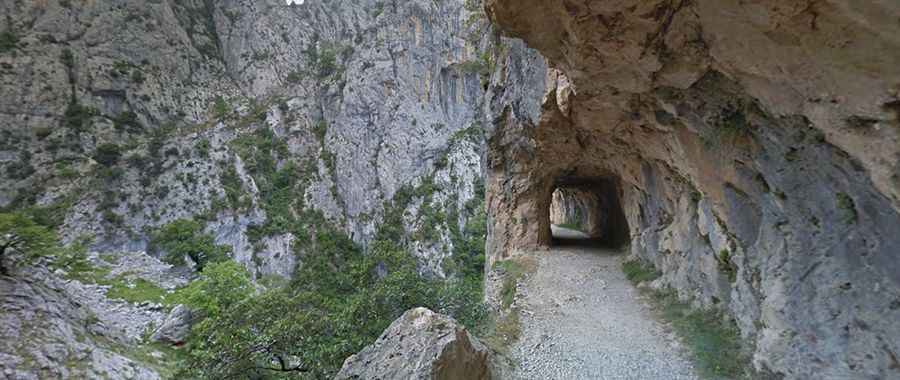A breathtaking hike through the Cares Gorge: Ruta del Cares
Ruta del Cares, also known as Senda del Cares, is one of the most breathtaking trekking trails in Europe. Located within the Picos de Europa mountain range in northern Spain, the trail takes you through dramatic landscapes along a narrow path carved directly into the rock of the Cares Canyon, also known as The Divine Gorge. This trail is not suitable for vehicles, as it is completely closed to any kind of motor transport. Only hikers can enjoy the stunning views along the route.

Where is Ruta del Cares?
Ruta del Cares is nestled between the provinces of Leon and Asturias, in the northern part of Spain. The trail runs through the Picos de Europa National Park, offering hikers the opportunity to explore one of the most scenic and dramatic gorges in the region.
How long is Ruta del Cares?
The trail is 11 km (6.8 miles) long one way, linking the small towns of Puente Poncebos in Asturias and Posada de Valdeón in Leon. If you're doing the round-trip hike, expect a total distance of 22 km (13.6 miles), taking around 6-8 hours.
When was Ruta del Cares built?
The path was originally built between 1916 and 1921 to provide access to the hydroelectric powerplant of Camarmeña and supply food and maintenance. It also served as the only route to reach the towns during the winter months when heavy snow blocked other roads. From 1945 to 1950, it was improved to facilitate water channelling for the Poncebos hydroelectric power station.
How dangerous is Ruta del Cares?
Ruta del Cares is a moderate to difficult trail, offering spectacular views but requiring a good level of physical fitness. The path can be narrow—sometimes as small as 1 meter wide—with a precipice on one side and no railings. Hikers must be cautious of rockslides and unstable footing, especially after heavy rainfall. The gorge is highly dangerous for those with vertigo, and the lack of railings makes it even riskier. From 2001 to 2018, at least six hikers lost their lives on this route.
Is Ruta del Cares open to vehicles?
No, Ruta del Cares is completely closed to all vehicles. The trail is strictly for pedestrians, as it was built for maintenance of the hydroelectric stations and to provide a passageway for locals during winter. The narrowness of the path and the unpredictable conditions make it unsuitable for any kind of vehicle.
How long does it take to complete Ruta del Cares?
The hike usually takes 3-4 hours one way, but the total round-trip duration is closer to 6-8 hours. The trail is rocky and requires a good level of physical shape. It's also worth noting that the path can become crowded, especially during peak times like summer and Easter, with more than 200,000 visitors each year.
What are the safety concerns?
Ruta del Cares is highly dangerous, especially for those with vertigo or fear of heights. The narrowness of the path, with a precipice on one side, makes it essential to be cautious. The risk of rockslides is present, and during rainy or winter months, the trail can be slippery and even more treacherous. Wearing sturdy hiking boots is a must, and hikers should be in good physical condition. In addition, the trail is not suitable for those with fear of heights as there are no railings or barriers for most of the path.
What can I see along the trail?
The route offers breathtaking views of the limestone cliffs and the Cares River below. The Picos de Europa provides dramatic landscapes, and along the path, hikers will pass through caves, tunnels, and bridges. The surrounding villages, such as Posada de Valdeón, offer a glimpse of traditional Spanish culture, and the Cares Canyon presents a truly otherworldly experience. The trail is a journey through both natural beauty and geological wonder.
When is the best time to visit Ruta del Cares?
To avoid the crowds, the best times to visit Ruta del Cares are in spring and autumn, when the weather is more moderate, and the trail is less congested. Summer (particularly July and August) and Easter tend to see more visitors, which can make the experience less serene. Keep in mind that winter conditions can render parts of the trail slippery and dangerous, and snow can block access, especially in the higher sections.